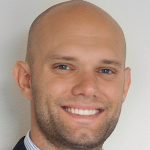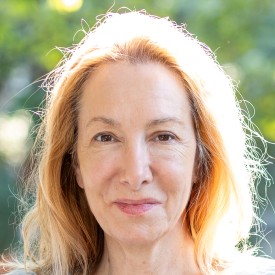Cindy Skach is Emeritus Professor of Law, King’s College London, and Professor of Political Science, University of Bologna. She was previously Professor of Comparative Government and Law, University of Oxford and Associate Professor of Government, Harvard University.
Below, Cindy shares five key insights from her new book, How to Be a Citizen: Learning to Be Civil Without the State. Listen to the audio version—read by Cindy herself—in the Next Big Idea App.

1. A guilty bystander is a thing.
The contemporary American idea of a citizen was vividly parodied in an episode of the sitcom Seinfeld. While visiting a suburban town, Jerry Seinfeld and his friends joked and laughed as they watched a stranger being robbed. When the police arrived and found them laughing, they were arrested for criminal indifference. Shocked and confused, they contacted a lawyer who argued their innocence by claiming that bystanders are by definition innocent. He went on to complain in court that the police were trying to change nature and create a whole new animal: the guilty bystander.
This is exactly what some ancient Romans intended to do, and what we should be doing now if we care about a true idea of citizenship. Humanitas (Latin for human nature, civilization, and kindness) and pietas (Latin for duty and the direct care of our communities) have lost way to the idea that the law will solve problems and help those in need. That citizenship is simply state membership—a status given to us by the state, binding us in a vertical relationship with it. This is such an impoverished, minimal definition of citizen.
If we are to thrive in our communities, we need to bring back some of the ancient ideas that saw citizenship as being both a member of a state vertically and a horizontally connected member of a community, where the virtues of generosity and humanity, not individualism, reign. So, yes Jerry, a guilty bystander is a thing.
2. Leadership isn’t everything—and it may even be nothing.
It seems banal to say that there are good leaders and bad leaders. Throughout history, we have certainly had examples of both. But what about if there were no leaders—or, at the very least, if we didn’t put all our eggs in the leaders’ baskets? What would that do to our ability to act and take responsibility for ourselves, and how would it encourage us to look after members of our communities?
We saw some of the best examples of non-leadership action during the pandemic, when mutual aid communities delivered medicines and food to people in quarantine while governments were still bickering over the value of face masks. Or let’s go back even further in time to Notting Hill, London, in the 1970s. There, at the Mangrove Restaurant, a local community of immigrants from the West Indies was repeatedly targeted and raided by police. Nine members of this community who peacefully protested such treatment were arrested on charges of conspiracy to incite a riot. As their trial approached, outraged locals spontaneously began a public education campaign to raise awareness of racism and bring immediate attention to the trial. When I reached out to the official photographer of this community, Jamaican-born Neil Kenlock, he said nobody told them to do it, but they knew each other and understood. Each person, he said, was looking in the same direction.
“He said nobody told them to do it, but they knew each other and understood.”
Eventually, the trial ended with the presiding judge acknowledging, for the first time, racial prejudice and wrongdoing in the London Metropolitan Police. We need only consider how these examples resonate with current protests across university campuses. Leadership isn’t everything. And it may even be nothing.
3. We all need a piazza.
This doesn’t necessarily mean sunning in a chair directly outside an Italian gelateria. It might, but it could more likely mean showing up regularly at a skateboard park in Birmingham. Or helping plant trees in a communal orchard in Oxford. Or having a drink at Sam’s bar in Boston, where everyone knows your name. The piazza is an Italian square, yes—but at the heart of the idea, one that dates from ancient architectural theory, is the creation of a place where people are free to come together regularly to exchange something that matters to them. It’s a marketplace for ideas and a forum.
The spaces that I am calling piazza are any accessible places where we feel comfortable showing up regularly to spend time together. Here, we can build what scholars such as Bob Putnam refer to as social capital: the social networks and norms of reciprocity and trustworthiness that come from social connection. It is also the place where citizens can form common knowledge—meaning, we can know something and also know that others know it, too.
This matters because coordinating is complex, even with all our social media apps. Without coordination, cooperation is difficult. If repressive dictatorships impose curfews and prohibit associational life, it is often to prevent exactly the kind of common knowledge, coordination, and cooperation that helped the Berlin Wall fall or that helped raise awareness of domestic violence in Mexico. Go ahead and find your piazza, make a new friend, and see what good community you can build.
4. Bigger is not better.
Robin Dunbar and other evolutionary psychologists have spent decades trying to understand the optimal size of stable social networks. Looking across time and space, from hunter-gatherers to historical English villages and social media platforms, Dunbar’s research suggests that the average size of a stable social network is 150, and the innermost circle, associated with physical and mental well-being and stable friendship, is only about five. So, somewhere between 150 and five, we have a good working number for our piazzas.
“We do not want homogeneous and exclusive, parochial enclaves.”
If some scholars and public intellectuals are calling for a scaling up, for internet democracy and large-scale constitutions for the world, I am calling for a scaling down, for a size that our neurological substrates can handle. Scaling up risks moving away from exactly the kind of face-to-face local organization that matters and makes democracy work. But there is a caveat: Diversity also matters here. We do not want homogeneous and exclusive, parochial enclaves. Research in both the social and natural sciences shows that we are willing to cooperate with those who are different from us, even sometimes across species, if we need to and we try. Small is best, but only when it is inclusive and accepting of diversity.
5. Start this at age three.
It is no coincidence that when you walk into one of the local government-run preschools of Reggio Emilia in Italy, you find yourself in a mini version of an ancient city, with a piazza deliberately placed in the center. There, children aged three to six are invited to mix and mingle in the open center, exchanging words or initiating play and observing one another. When I visited some years ago, two boys in high heels and pink boas emerged from the piazza together to observe me, then returned to their important work. In this educational model, the emphasis at this age is not on reading proficiency or numeracy but on becoming a citizen: the engaged colleague in the piazza. Like the Kindness Curriculum designed at the University of Wisconsin-Madison, the emphasis is not on individual academic progress but on connection—that subjective sense of care for the other.
So simple and yet so profound, this early-years educational model that begins with the idea of the embodied citizen, one that cares first and foremost not about stickers and achievement but kindness and connection, must happen. Research shows that where these ideas have been brought into schools (either informally or in a structured way), both through physical spaces that enable rather than constrain and teachers that do the same, we see positive externalities: less bullying, a reduction in crime in the broader community, and more community cohesiveness. I refer to this as a deep education, and it needs to start at about age three.
I am not suggesting that anyone break or ignore the law. I’m glad it’s there for us, but I strongly feel we should not hide behind it. Laws should be the understudies in our dramas, not the main players.
To listen to the audio version read by author C.L. Skach, download the Next Big Idea App today:































